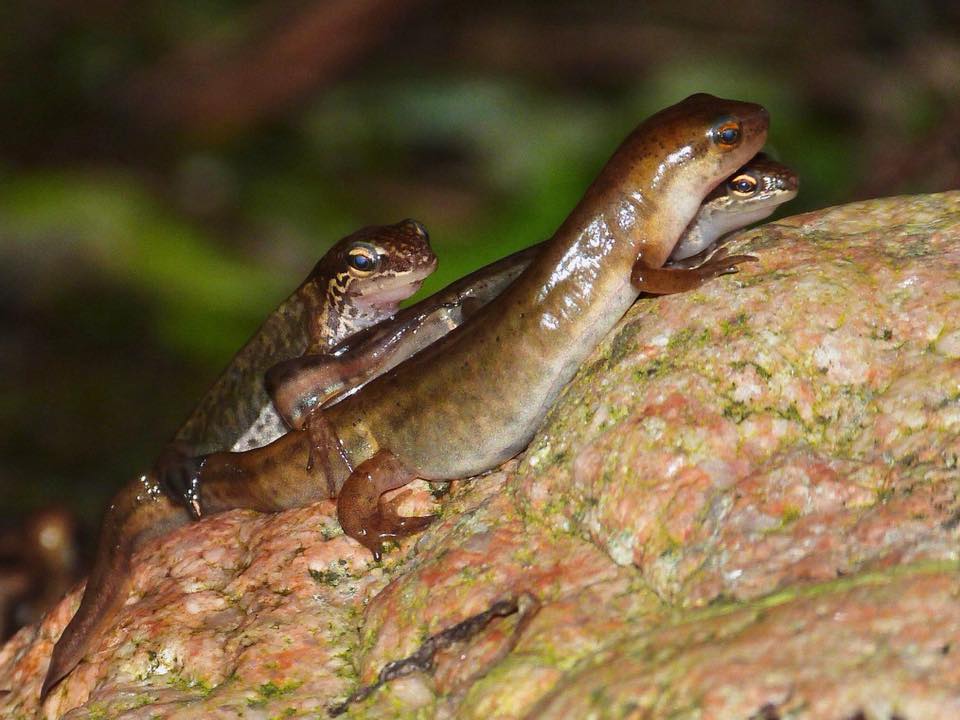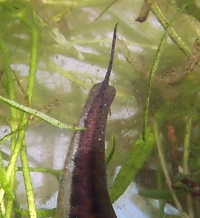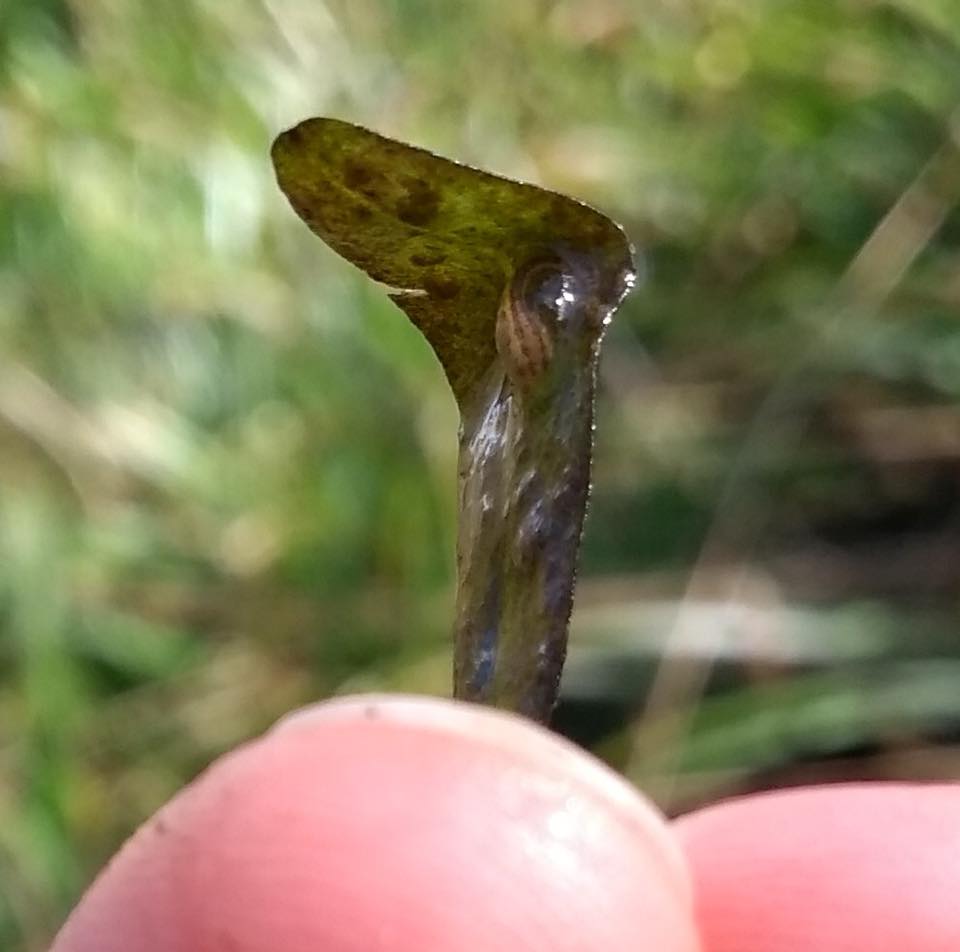Palmate Newt - Ecology
Palmate Newt - Ecology
Species: The Palmate newt scientifically known as (Lissotriton helveticus) are the only species of newt found on the island of Jersey. Approximately 6cm in length with a similar appearance to the common newt. Although there are a few records on the JBC database of common newts these are most likely to be misidentified as Palmate newts. Both male, and sometimes female is characterised by smooth brown skin with lines of spots along the sides (flanks) and tail (McLaren, 2009). Both sexes have a dull orange/yellow belly, unspotted throat with pale yellow/pink colouration and a scattering of dark spots. Mature males can be distinguished as darker, sometimes olive brown with a dark eye spot and a filament at the end of their tail. Gradually when this newt reaches its terrestrial phase, both sexes appear orangey brown with dry looking skin (JARG, 2020).
Habitat and diet: These newts are nocturnal on land and found in habitats such as forests, marshes, pastures, or gardens. After emerging from hibernation in spring, they move to stagnant, fish-free water bodies for breeding. Prefers shallow brackish water on acid-rich soils therefore, less common in garden ponds like the common newt (McLaren, 2009). Their diet consists of arthropods, small worms, and slugs. Once they reach back into the ponds their diet consists of small planktonic crustaceans, leeches, caddis fly larvae and frog tadpoles. They can travel far from their breeding ponds and will take shelter under log/rock piles and within wall crevices. Occasionally they are reported as being found in homes and buildings (JARG, 2020).
Lifecycle: Palmate newts will lay eggs during spring individually on plant leaves, e.g., small broad-leaved plants such as water forget me not (Myosotis scorpioides) and water mint (Mentha aquatica). Newt larvae (efts) will hatch out with a frill of external gills behind the head. Unlike frogs and toads, the first stage of development is the growth of front legs, and once the summer has started the gills disappear after leaving the water. On land they are usually found in damp areas (ARC, 2016).
Reproduction: Interestingly, after a courtship display, the male deposits a spermatophore that is picked up by the female. Larvae develop over after 1.5–3.5 months before metamorphosing into land-dwelling juveniles. When sexual maturity is reached after two to three years, the newts can reach a total age of up to 12 years in the wild. Palmate Newt larvae are predated on by many other species. The adults are usually taken by Kingfishers, Grass Snakes, and larger fish (ARC, 2016; JARG, 2020).
Photo credit:
Palmate newts: Nick Parlett
Palmate newt male tail: W.Wilkinson
Palmate newt egg: Ani Binet



